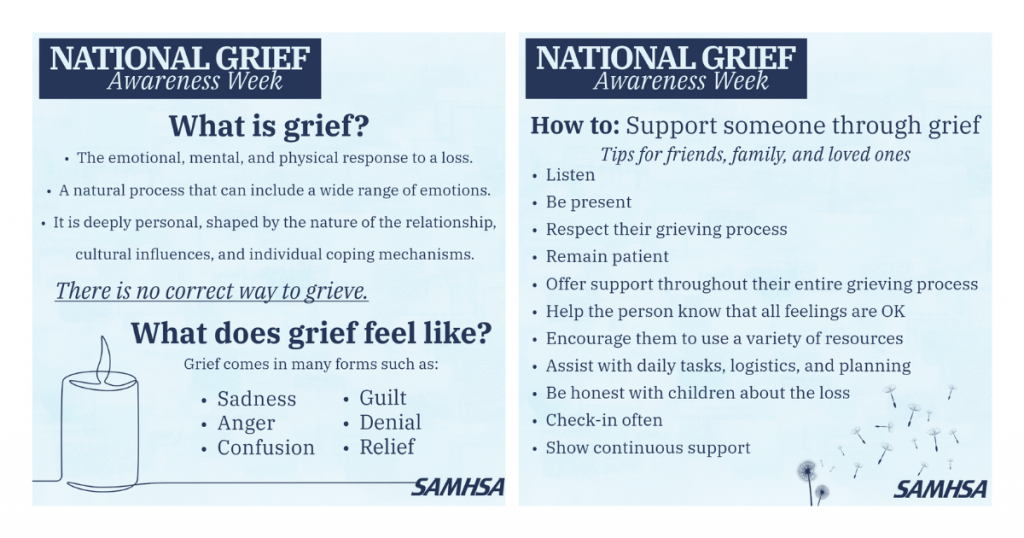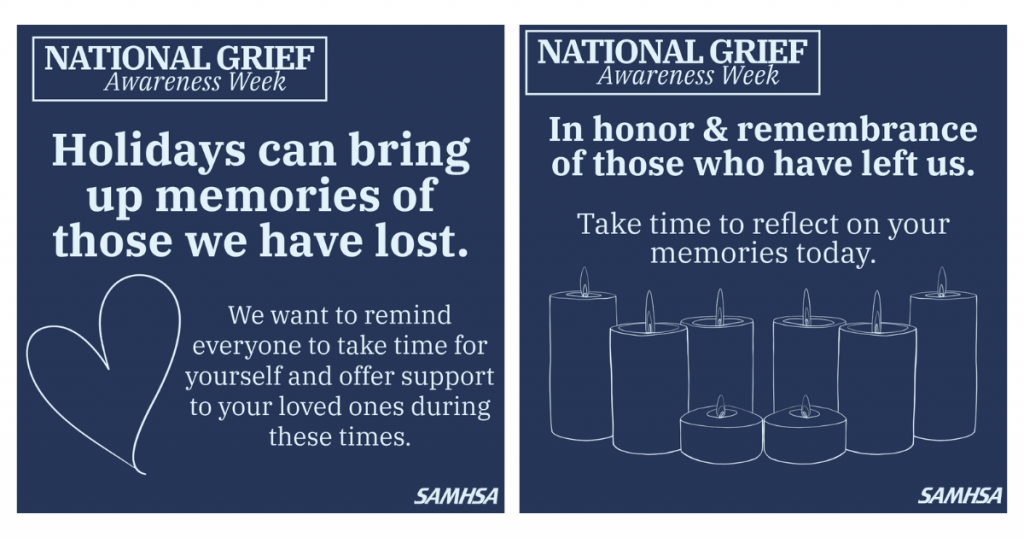Five Ideas for Recognizing National Grief Awareness Week in Your Community
Helping families navigate the complicated and highly-individualized journey through grief and loss is a natural extension of the services you provide as a deathcare professional. Sometimes, though, the simple act of just recognizing that it’s okay to grieve can be as important as providing the proper tools to help them deal with their loss.
National Grief Awareness Week, which is observed during the first week of December, presents a powerful opportunity for deathcare professionals to show your community that grief is normal, unique, and perfectly acceptable. Sponsored by Substance Abuse and Mental Health Services Administration (SAMHSA), the week is designed to “raise awareness about grief and loss” and — and it’s a perfect time for funeral homes to deepen family support and strengthen community outreach.
Here are some ideas gleaned from SAMHSA’s plethora of grief and loss resources:
Normalize grief and encourage conversation
SAMHSA reminds us that grief is “a natural response to loss” and emphasizes that many people experience it differently and may feel isolated. The deathcare community is uniquely positioned to open respectful dialogue during pre-arrangement meetings, service planning, or aftercare/follow-up. Encourage clients and families by reminding them that “there’s no wrong way to grieve” and provide them with resources like SAMHSA’s tip sheet How to Support a Person Who Is Grieving a Loss of Life. By framing grief as expected and shared rather than something to hide, you create an environment of trust and affirmation.
Offer tangible resources and recommendations
Many families may feel lost in the days and weeks after a funeral. Consider creating or curating a short “grief support guide” specific to your community. List local support groups, faith-based grief ministries, grief-informed counselors, and online resources. Include guidance on when grief may require additional support (for example, complicated grief or long-term, intense reactions) and provide contact info for 988, the US crisis line, if urgent help is needed. Embedding this into your aftercare communication acknowledges the ongoing nature of bereavement.

Mark National Grief Awareness Week within your organization
Use this designated week as a moment to show your team’s empathy and community leadership. Simple actions could include sharing social-media posts using the hashtag #NGAW with the graphics and messaging from SAMHSA’s toolkit, which we’ve shared here; hosting a small remembrance event (e.g., a light-a-candle vigil or memory tree for those lost) in your chapel; or offering a brief no-cost “grief check-in” meeting with families served earlier in the year. Engaging in this way reinforces that the relationship doesn’t end with the service.

Train staff in grief-sensitive communication
Behind the scenes, your team plays a vital role. Encourage staff to become familiar with foundational grief concepts: that grief may involve emotional, mental, and physical responses; that it does not follow a linear path; and that cultural, faith, and individual factors shape reaction. Role-play simple supporting statements and cues to listen more than speak. Such preparation ensures all client touchpoints—from funeral directors to administrative staff—demonstrate consistency and compassion.
Follow up long-term and build a memory-focused engagement strategy
The service may be over, but healing continues. Consider scheduling a follow-up call or sending a handwritten note on the anniversary of the loss (or during holidays, which SAMHSA recognizes may trigger reflections). Offer a quarterly email or print mailing with short grief-education content, or partner with local grief support organizations to deliver workshops or webinars. Demonstrating ongoing presence helps families feel less forgotten and reinforces the role of your practice as a pillar of support.
National Grief Awareness Week offers funeral professionals a meaningful occasion not only to raise awareness but to actively enhance care. By normalizing grief, providing resources, marking the week with intentional support, training your team, and maintaining long-term engagement, your practice can make a lasting difference in how families navigate their loss and healing.




